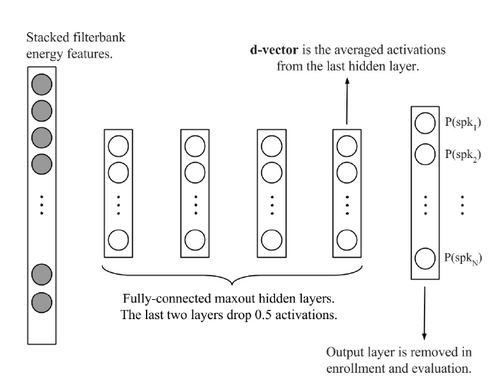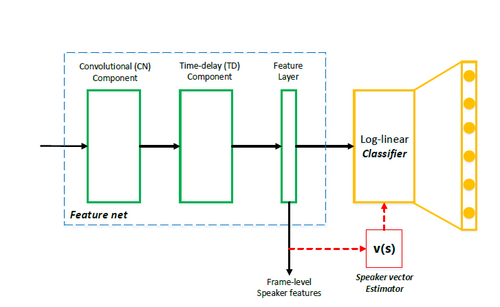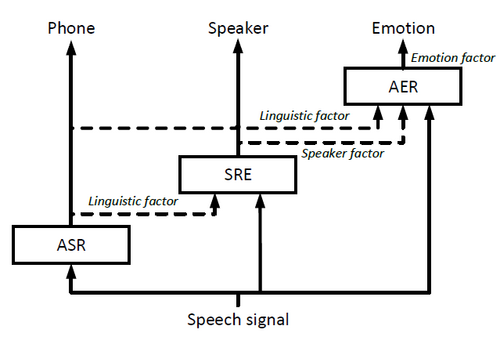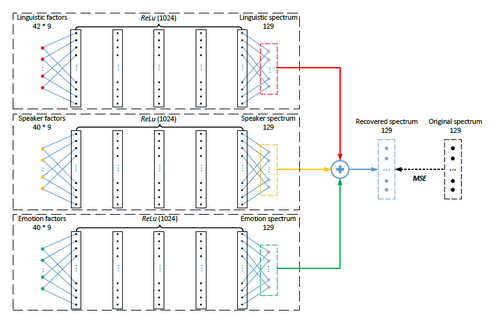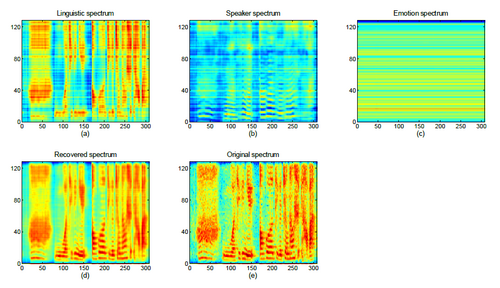“Racorn-k”版本间的差异
(以“=Project name= Deep Factorization for Speech Signals =Project members= Dong Wang, Lantian Li, Zhiyuan Tang =Introduction= Various informative factors mixed in sp...”为内容创建页面) |
|||
| 第1行: | 第1行: | ||
=Project name= | =Project name= | ||
| − | + | RACORN-K: RISK-AVERSION PATTERN MATCHING-BASED PORTFOLIO SELECTION | |
=Project members= | =Project members= | ||
| − | Dong Wang, | + | Yang Wang, Dong Wang, Yaodong Wang, You Zhang |
=Introduction= | =Introduction= | ||
| − | + | Portfolio selection is the central task for assets management, | |
| − | + | but it turns out to be very challenging. Methods | |
| − | + | based on pattern matching, particularly the CORN-K algorithm, | |
| − | + | have achieved promising performance on several | |
| − | + | stock markets. A key shortage of the existing pattern matching | |
| − | A | + | methods, however, is that the risk is largely ignored |
| − | + | when optimizing portfolios, which may lead to unreliable | |
| − | + | profits, particularly in volatile markets. We present a riskaversion | |
| − | + | CORN-K algorithm, RACORN-K, that penalizes | |
| − | + | risk when searching for optimal portfolios. Experiments on | |
| − | + | four datasets (DJIA, MSCI, SP500(N), HSI) demonstrate | |
| − | + | that the new algorithm can deliver notable and reliable improvements | |
| − | + | in terms of return, Sharp ratio and maximum | |
| − | + | drawdown, especially on volatile markets. | |
2017年10月31日 (二) 01:16的版本
目录
Project name
RACORN-K: RISK-AVERSION PATTERN MATCHING-BASED PORTFOLIO SELECTION
Project members
Yang Wang, Dong Wang, Yaodong Wang, You Zhang
Introduction
Portfolio selection is the central task for assets management, but it turns out to be very challenging. Methods based on pattern matching, particularly the CORN-K algorithm, have achieved promising performance on several stock markets. A key shortage of the existing pattern matching methods, however, is that the risk is largely ignored when optimizing portfolios, which may lead to unreliable profits, particularly in volatile markets. We present a riskaversion CORN-K algorithm, RACORN-K, that penalizes risk when searching for optimal portfolios. Experiments on four datasets (DJIA, MSCI, SP500(N), HSI) demonstrate that the new algorithm can deliver notable and reliable improvements in terms of return, Sharp ratio and maximum drawdown, especially on volatile markets.
Speaker feature learning
The discovery of the short-time property of speaker traits is the key step towards speech signal factorization, as the speaker trait is one of the two main factors: the other is linguistic content that we have known for a long time being short-time patterns.
The key idea of speaker feature learning is simply based on the idea of discriminating training speakers based on short-time frames by deep neural networks (DNN), date back to 2014 by Ehsan et al.[2]. As shown below, the output of the DNN involves the training speakers, and the frame-level speaker features are read from the last hidden layer. The basic assumption here is: if the output of the last hidden layer can be used as the input feature of the last hidden layer (a software regression classifier), these features should be speaker discriminative.
However, the vanilla structure of Ehsan et al. performs rather poor compared to the i-vector counterpart. One reason is that the simple back-end scoring is based on average to derive the utterance-based representations (called d-vectors) , but another reason is the vanilla DNN structure that does not consider much of the context and pattern learning. We therefore proposed a CT-DNN model that can learn stronger speaker features. The structure is shown below[1]:
Recently, we found that an 'all-info' training is effective for learning features. Looking back to DNN and CT-DNN, although the features
read from last hidden layer are discriminative, but not 'all discriminative', because some discriminant info can be also impelemented
in the last affine layer. A better strategy is let the feature generation net (feature net) learns all the things of discrimination.
To achieve this, we discarded the parametric classifier (the last affine layer) and use the simple cosine distance to conduct the
classification. An iterative training scheme can be used to implement this idea, that is, after each epoch, averaging the speaker
features to derive speaker vectors, and then use the speaker vectors to replace the last hidden layer. The training will be then
taken as usual. The new structure is as follows[4]:
Speech factorization
The short-time property is a very nice thing, which tells us it is possible to factorize speech signals. By factorization, we can achieve significant benefits:
A. Individual tasks can be largely improved, as unrelated factors have been removed.
B. Factors that are disturbs now becomes valuables things, leading to conditional training and collaborative training [5].
C. Once the factors have been separated, single factors can be manipulated, and reassemble these factors can change the signal according to the need.
D. It is a new speech coding scheme that leverage knowledge learned from large data.
Traditional factorization methods are based on probabilistic models and maximum likelihood learning. For example, in JFA, a linear Gaussian is assumed
for speaker and channel, and then a ML estimation is applied to estimate the loading matrices of each factor, based on a long duration of speech. Almost
all these factorizations share these features: shallow, linear, Gaussian, long-term segments.
We are more interested in factorization on frame-level, and plays not much assumption on how the factors are mixed. A cascaded factorization approach has been proposed[6]. The basic idea is to factorize significant factors first,and then conditioned on the factors that have been derived. The architecture is as follows, where we factorized speech signals into three factors: linguistic content, speaker trait, emotion. When factorizing each factor, supervised learning is used. Note by this architecture, databases with different target labels can be used in a complementary way, which is different from previously joint training approach that needs full-labelled data.
Speech reconstruction
To verify the factorization, we can reconstruct the speech signal from the factors. The reconstruction is simply based on a DNN, as shown below. Each factor passes a unique deep neural net, the output of the three DNNs are added together, and compared with the target, which is the logarithm of the spectrum of the original signal. This means that the output of the DNNs of the three factors are assumed to be convolved together to produce the original speech.
Note that the factors are learned from Fbanks, by which some speech information has been lost, however the recovery is rather successfull.
View the reconstruction
More recovery examples can be found here.
Listen to the reconstruction
We can listen to the wave for each factor, by using the original phase.
Original speech: [1]
Linguistic factor: [2]
Speaker factor: [3]
Emotion factor: [4]
Liguistic+ Speaker + Emotion: [5]
Research directions
- Adversarial factor learning
- Phone-aware multiple d-vector back-end for speaker recognition
- TTS adaptation based on speaker factors
Reference
[1] Lantian Li, Yixiang Chen, Ying Shi, Zhiyuan Tang, and Dong Wang, “Deep speaker feature learning for text-independent speaker verification,”, Interspeech 2017.
[2] Ehsan Variani, Xin Lei, Erik McDermott, Ignacio Lopez Moreno, and Javier Gonzalez-Dominguez, “Deep neural networks for small footprint text-dependent speaker verification,”, ICASSP 2014.
[3] Lantian Li, Dong Wang, Yixiang Chen, Ying Shing, Zhiyuan Tang, http://wangd.cslt.org/public/pdf/spkfact.pdf
[4] Lantian Li, Zhiyuan Tang, Dong Wang, FULL-INFO TRAINING FOR DEEP SPEAKER FEATURE LEARNING, http://wangd.cslt.org/public/pdf/mlspk.pdf
[5] Zhiyuan Thang, Lantian Li, Dong Wang, Ravi Vipperla "Collaborative Joint Training with Multi-task Recurrent Model for Speech and Speaker Recognition", IEEE Trans. on Audio, Speech and Language Processing, vol. 25, no.3, March 2017.
[6] Dong Wang,Lantian Li,Ying Shi,Yixiang Chen,Zhiyuan Tang., "Deep Factorization for Speech Signal", https://arxiv.org/abs/1706.01777
